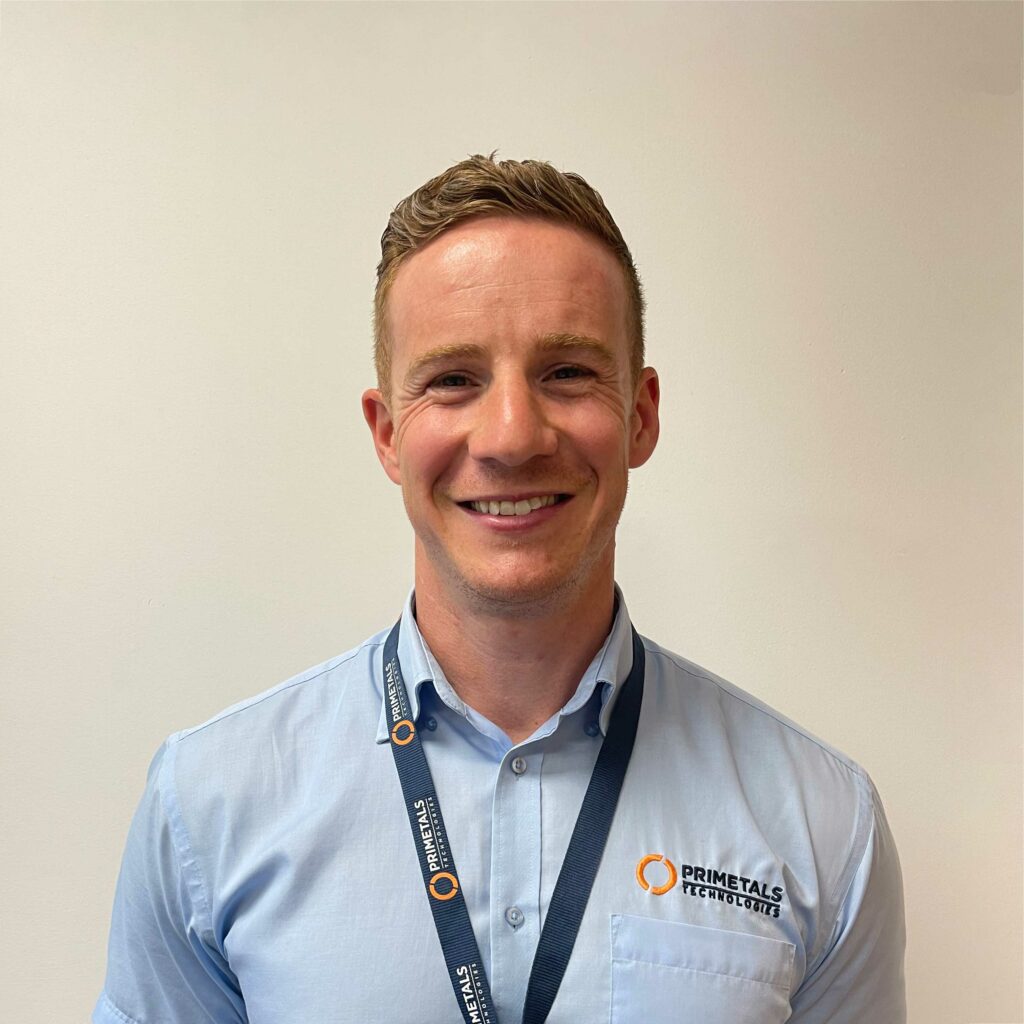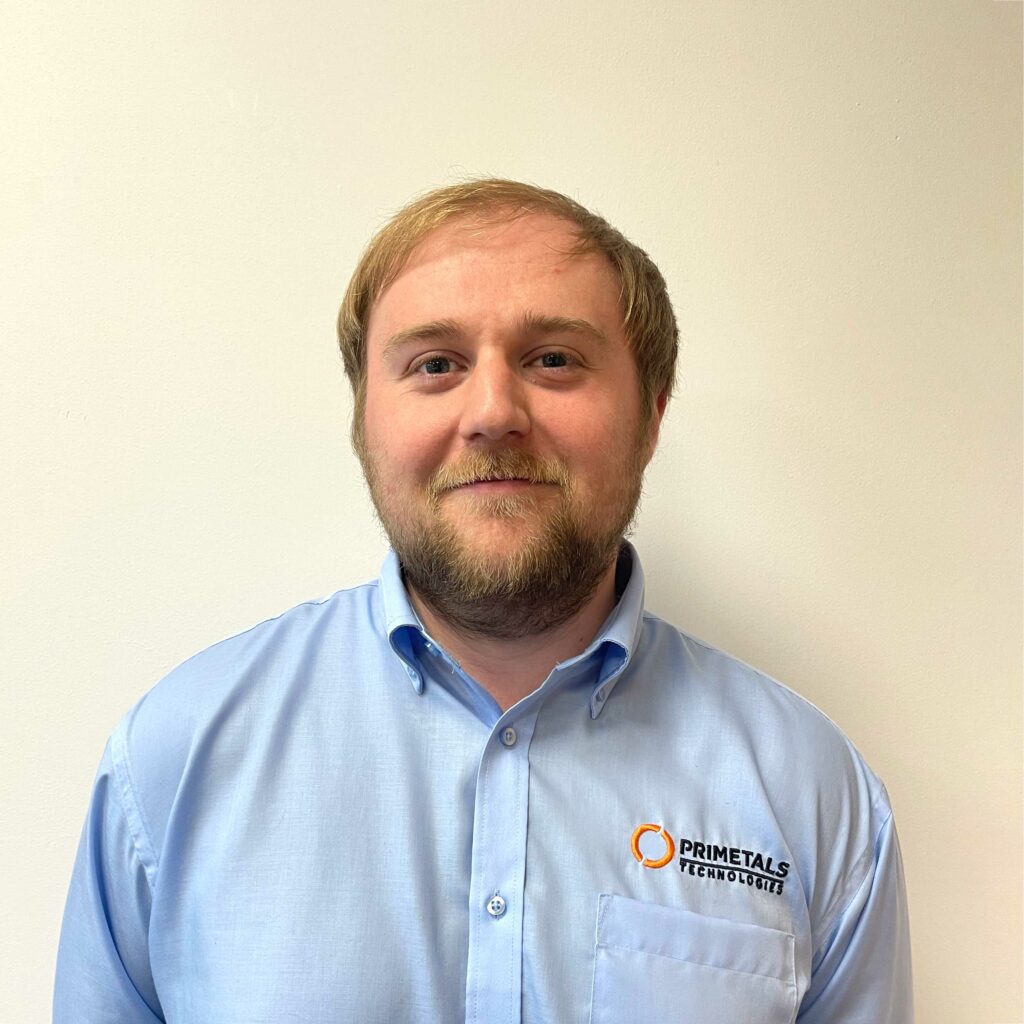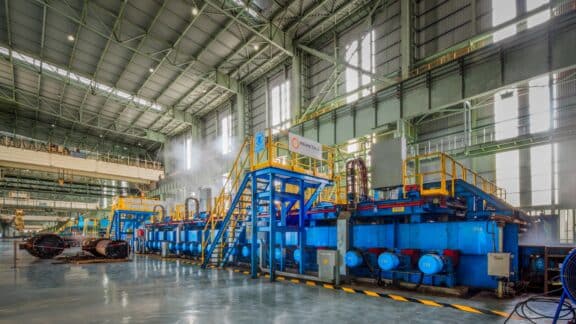Metals Magazine speaks with Project Engineers Paul Whiting (Project Engineer) and Richard Hawke (Project Engineering Manager) from the Sheffield, U.K., location of Primetals Technologies. Mr. Whiting and Mr. Hawke share a passion for engineering and a long history in various projects at Primetals Technologies. Mr. Whiting began at Primetals Technologies 2012 as an apprentice and has worked as a design engineer. He now works as a project engineer directly with customers, providing engineering solutions worldwide. Mr. Hawke also began in 2012 as a mechanical engineer and became a project engineer in 2017 and now manages a team of project engineers in Sheffield.
How would you describe your role at Primetals Technologies?

Richard Hawke: As a project engineering manager, I bring my previous experience as a project engineer to the entire team. Our project engineers work with specific customers and have their own group of engineers assigned to a specific project. Personally, I am responsible for handling my own projects and supporting the team of project engineers to ensure that we meet all our customer needs.

Paul Whiting: After starting as a design engineer, I was interested in growing at Primetals Technologies and becoming more involved in project engineering. The difference here was being able to oversee all engineering disciplines and being the touchpoint for our customers and projects around the globe. Moreover, as a project engineer, you’re involved in all aspects of engineering projects, from the initial design of a piece of equipment to the manufacturing and installation.
What types of projects do you oversee?
Hawke: Our teams at Primetals Technologies in Sheffield, U.K., handle projects focused on “downstream” flat rolling, including hot and cold aluminum mills and hot rolling of steel products, including roughing mills and plate mills. Our teams also work on everything from large-scale greenfield projects to smaller projects, such as revamps and modernization projects.
How long do projects tend to last?
Whiting: Many of our projects progress from original installations, taking from one to three years, to additional orders or modernizations. It has always been a pleasure to work with customers on various projects over the years and find more opportunities to improve their equipment and reach higher levels of performance and satisfaction for the customer, especially as the project develops.
… we are problem solvers, and we are all in this industry because we love taking on our customer’s challenges and finding solutions.
Paul Whiting
Project Engineer, Primetals Technologies
How do your teams approach engineering projects?
Whiting: It always starts as a standard piece of equipment, but it quickly goes from being a straightforward design to a tailor-made solution based on the unique needs of our customers.
Hawke: It is a balancing act between the project’s original scope and additional engineering requirements that may come up. Ultimately, we are solution-oriented regarding our customers and their needs, and we want to try to meet those needs without incurring additional cost, even if modifications are required.
Whiting: Really, we are problem solvers, and we all are in this industry because we love taking on our customer’s challenges and finding solutions, whether it involves modifying original specifications to meet the engineering needs or devising an entirely new solution.
Could you elaborate a bit more on what that might look like in a project?
Hawke: Of course. In one case, we met the customer’s needs by modifying our designs to match existing equipment. This actually occurs quite often and comes with its own set of challenges. For example, in several projects, many of the original designs or specifications are not up to date or sometimes drawings are even missing when it comes to older pieces of equipment. What is essential is communicating with our customers and finding a solution that keeps costs down and accommodates the existing equipment to achieve the performance that our customers expect.
Are there any other benefits from working with our engineering teams?
Whiting: One essential part of our approach is the level of involvement of all the team players in a project. At times, it is not uncommon to see all of our colleagues, even some from other projects, gathered around a drawing of a challenging project specification or something that may require a more creative approach. Moments like that when the entire engineering group comes together makes it clear that there is a team of individuals who take these challenges on as their own. It is always our team’s deep desire to provide the optimal solution and we take great pride in our work.
Are there clear advantages to our solutions and technologies?
Hawke: Our technologies offer clear profitable benefits and return on investment, especially, for example, a technology like MULPIC. The Aluminum Edge Trimmer also benefits our customers in terms of costs. For many other solutions, quality and yield benefits later down the line also appear in reduced processing costs that can lead to savings and further benefits.
Whiting: However, while there is an apparent increase in product quality for customers when it comes to our technologies, for our engineering teams it is all about ensuring our customers have an optimal solution for their specific needs.
From a project engineering perspective, have you seen any trends in the industry?
Whiting: Part of the trend that we have seen is an increase in consideration of quality, looking at the end product or coils and being able to guarantee to their customers that they are receiving top quality..
Hawke: Similarly, throughput and yield increases are always a consideration in several engineering projects, and we always try to design the equipment so customers can expect optimal output performance.
What part of your work is the most satisfying?
Hawke: Seeing an entire project come together from start to finish. There was a small project many years ago that was one of my first projects, and seeing the installed primary descaling system in operation delivered such a tremendous feeling of accomplishment. Honestly, you never get tired of that feeling.
Whiting: Richard mentioned that for project engineers, you are working on these projects from design to manufacturing through to installation and being able to be on-site for part of the installation process is highly fulfilling. Seeing a designed piece of equipment, especially large pieces of equipment such as plate or aluminum mill stands, being installed and go into operation is simply exhilarating. As I mentioned, there is a real sense of ownership for our engineers regarding each project, and seeing these projects come to fruition as the optimal solution is deeply satisfying.
GET IN TOUCH
For direct inquiries concerning hot rolling plate and aluminum mill technologies, click here.

